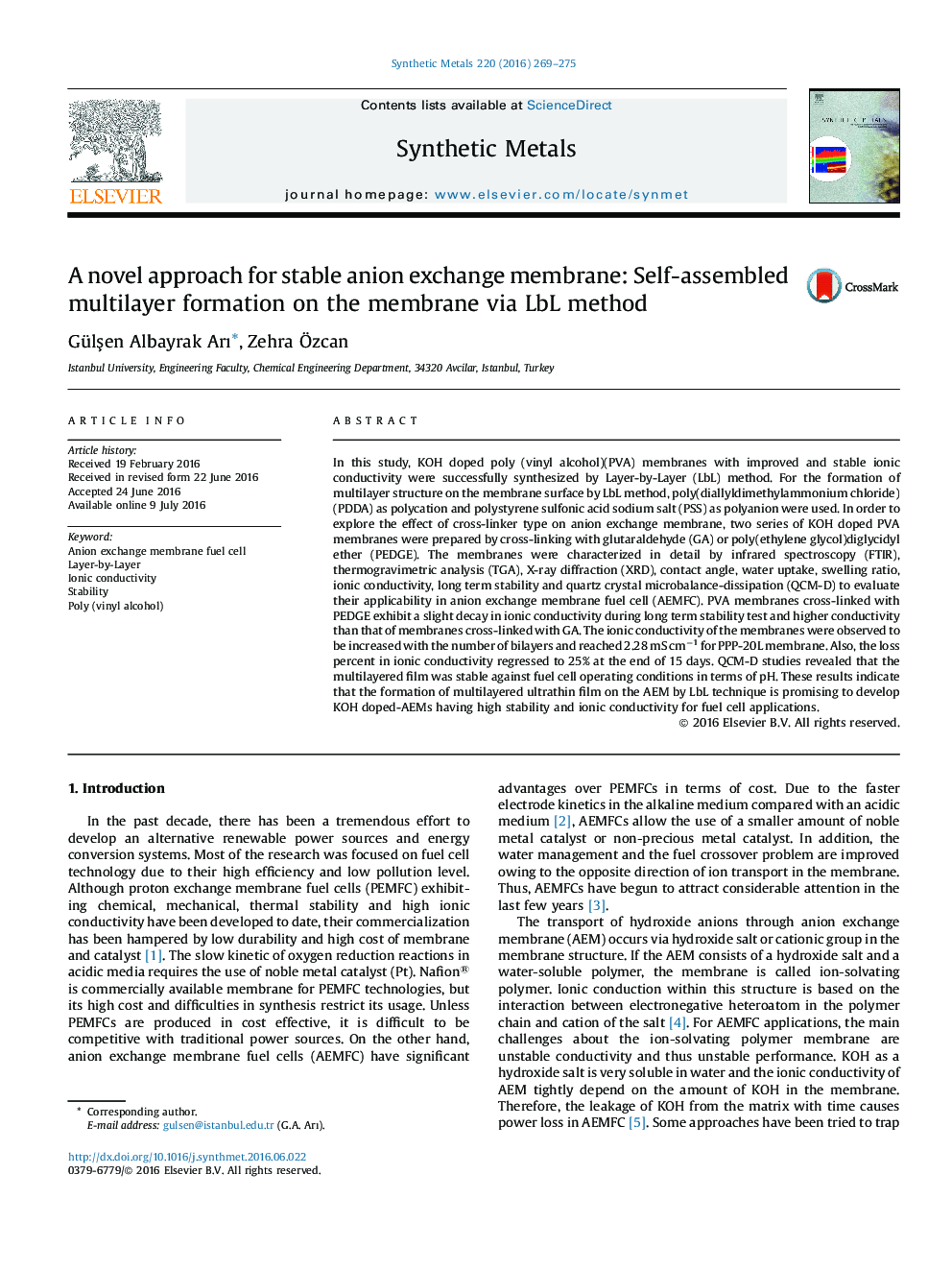| کد مقاله | کد نشریه | سال انتشار | مقاله انگلیسی | نسخه تمام متن |
|---|---|---|---|---|
| 1440091 | 1509357 | 2016 | 7 صفحه PDF | دانلود رایگان |

• Synthesis of multilayered PVA membranes by LbL method to hold KOH inside AEM.
• The effect of cross-linker agent type on ionic conductivity was investigated.
• The membranes cross-linked with PEDGE gave highest ionic conductivity.
• The presence of ultrathin film on the AEM provided a significant improvement in conductivity stability.
In this study, KOH doped poly (vinyl alcohol)(PVA) membranes with improved and stable ionic conductivity were successfully synthesized by Layer-by-Layer (LbL) method. For the formation of multilayer structure on the membrane surface by LbL method, poly(diallyldimethylammonium chloride) (PDDA) as polycation and polystyrene sulfonic acid sodium salt (PSS) as polyanion were used. In order to explore the effect of cross-linker type on anion exchange membrane, two series of KOH doped PVA membranes were prepared by cross-linking with glutaraldehyde (GA) or poly(ethylene glycol)diglycidyl ether (PEDGE). The membranes were characterized in detail by infrared spectroscopy (FTIR), thermogravimetric analysis (TGA), X-ray diffraction (XRD), contact angle, water uptake, swelling ratio, ionic conductivity, long term stability and quartz crystal microbalance-dissipation (QCM-D) to evaluate their applicability in anion exchange membrane fuel cell (AEMFC). PVA membranes cross-linked with PEDGE exhibit a slight decay in ionic conductivity during long term stability test and higher conductivity than that of membranes cross-linked with GA. The ionic conductivity of the membranes were observed to be increased with the number of bilayers and reached 2.28 mS cm−1 for PPP-20L membrane. Also, the loss percent in ionic conductivity regressed to 25% at the end of 15 days. QCM-D studies revealed that the multilayered film was stable against fuel cell operating conditions in terms of pH. These results indicate that the formation of multilayered ultrathin film on the AEM by LbL technique is promising to develop KOH doped-AEMs having high stability and ionic conductivity for fuel cell applications.
Journal: Synthetic Metals - Volume 220, October 2016, Pages 269–275